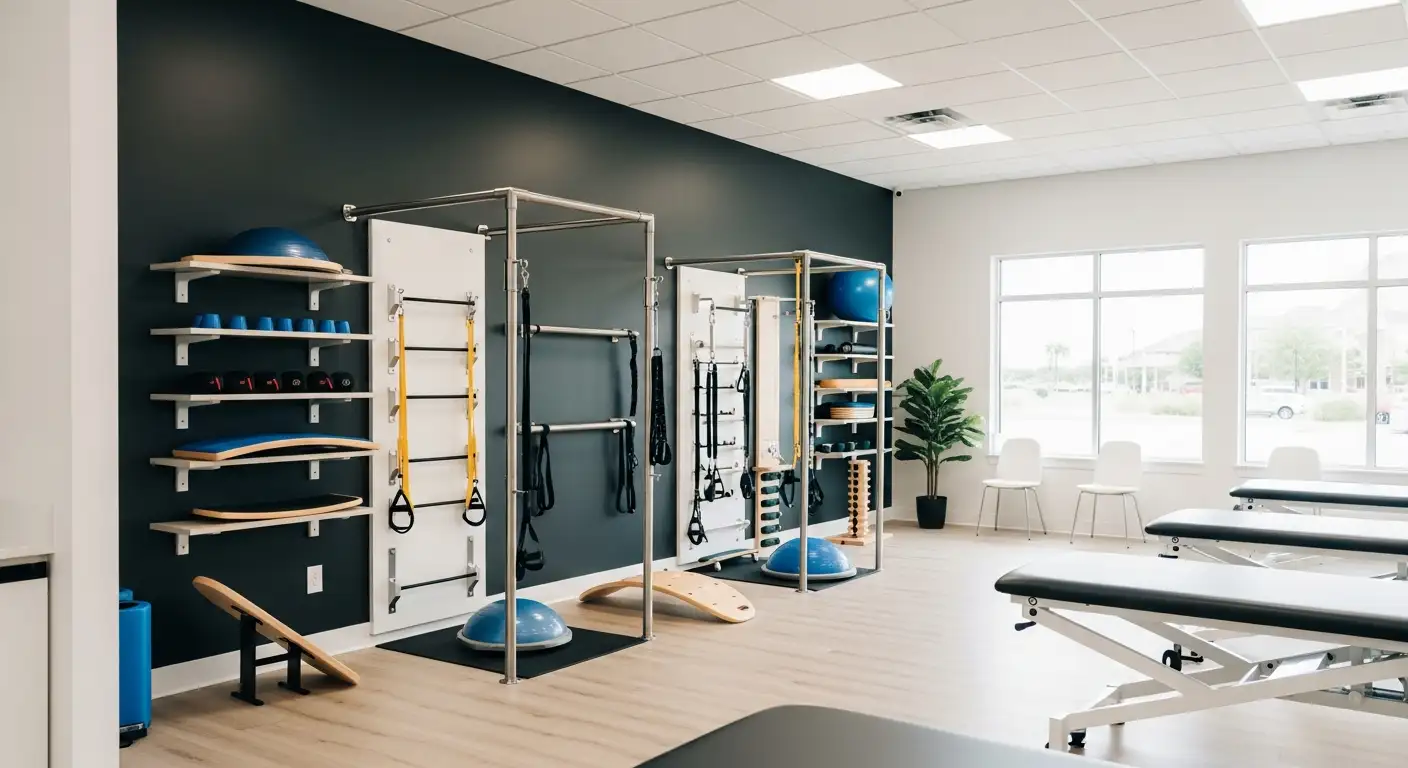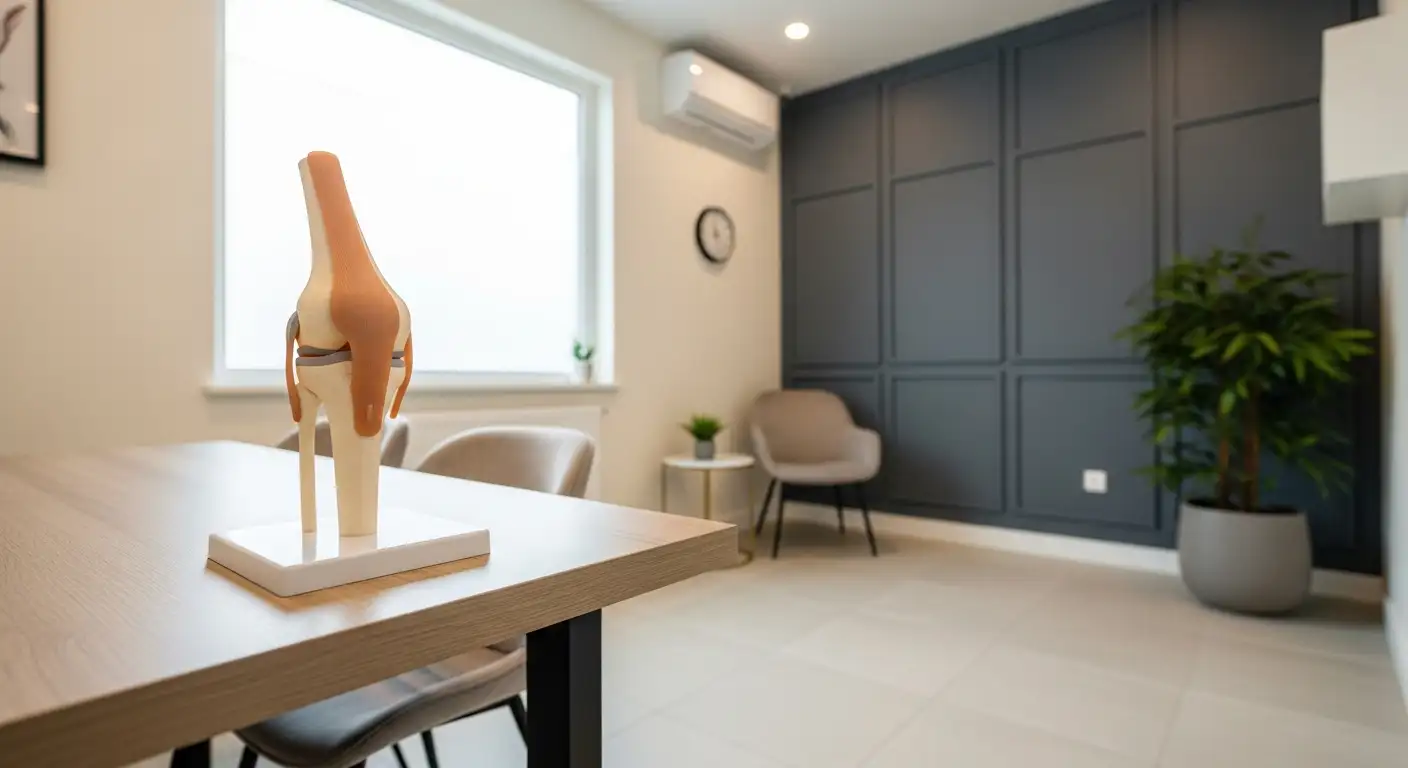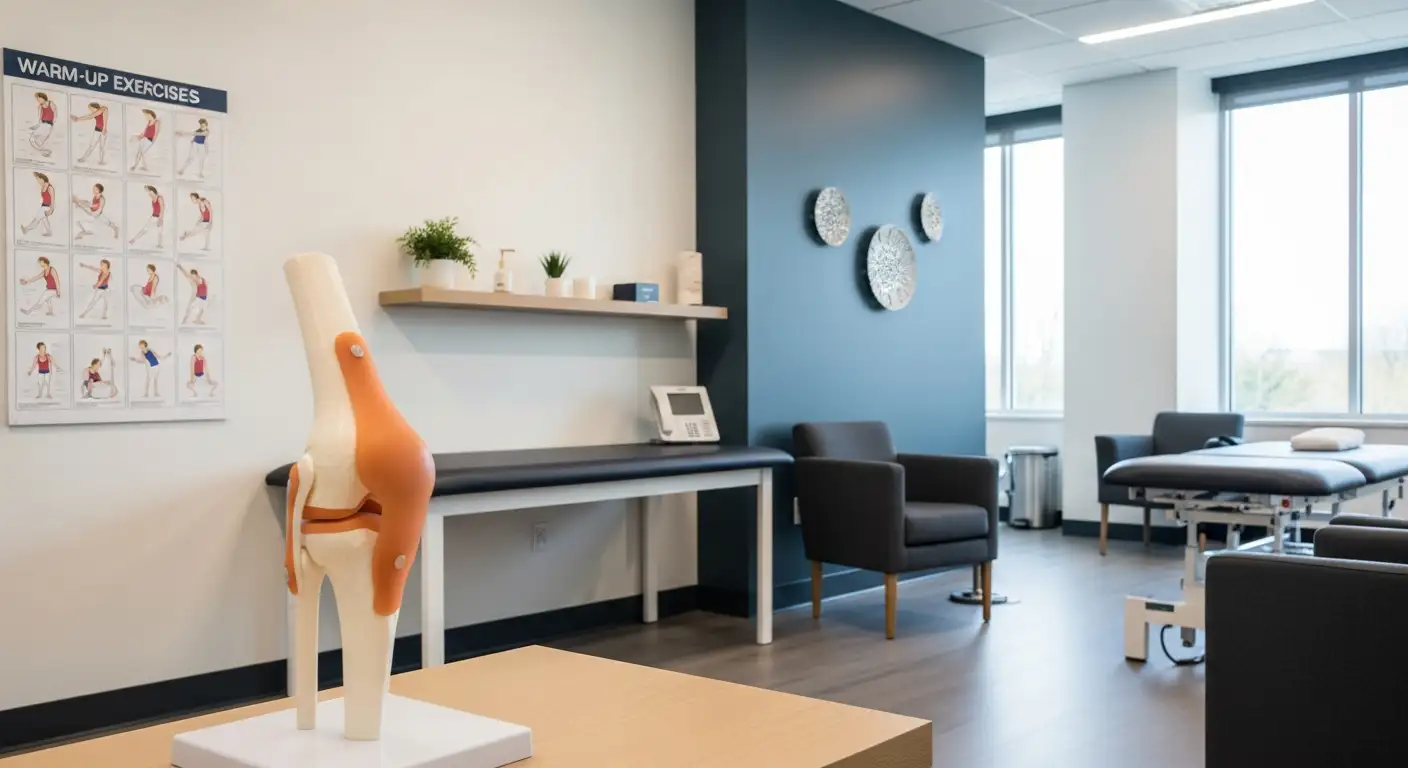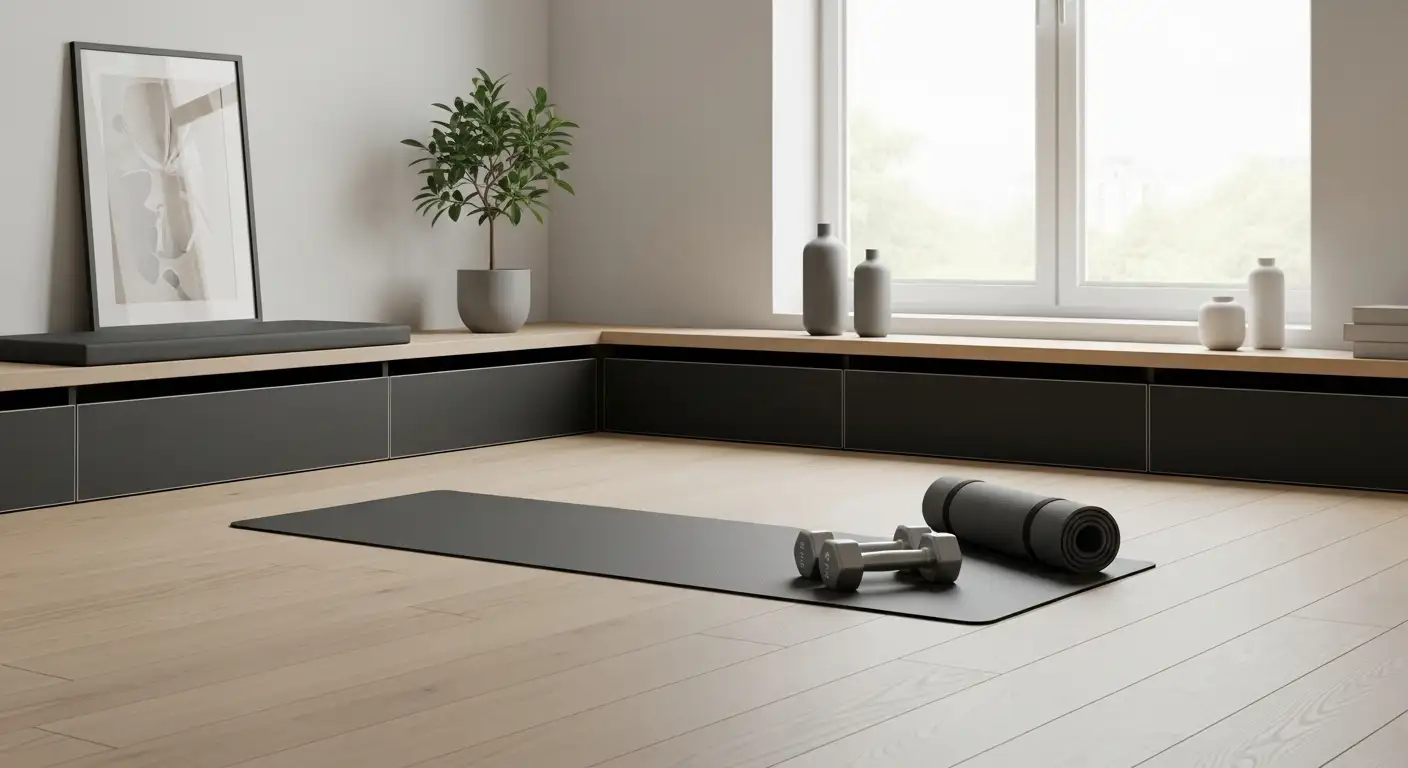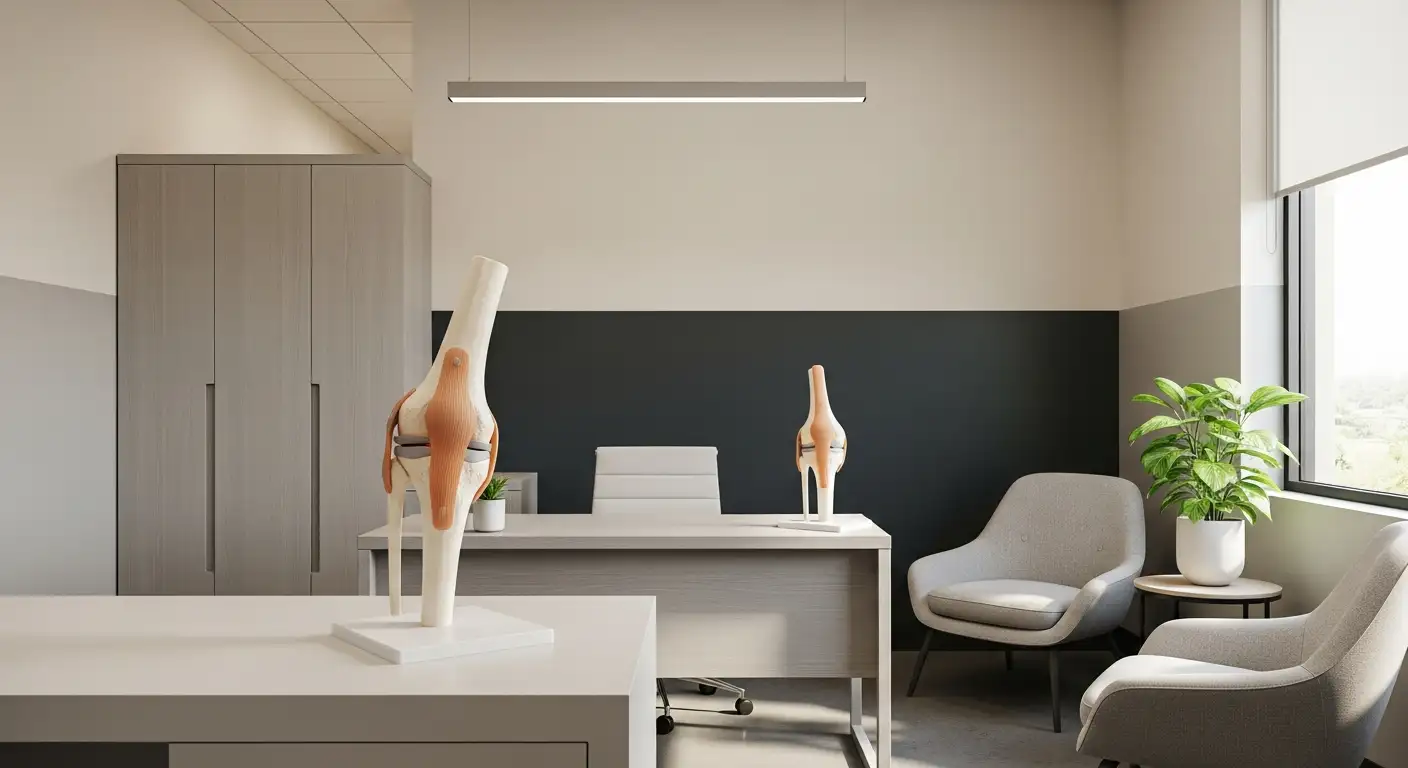Understanding Knee Pain
Knee pain is a common ailment experienced by individuals of all age groups. It can be triggered by an array of factors and can vary in intensity, duration, and location. To better understand knee pain, it's crucial to first comprehend the anatomy of the knee and the common causes that can lead to discomfort.

Anatomy of the Knee
The knee is one of the largest and most complex joints in the body. It connects the thigh bone (femur) to the shin bone (tibia). The smaller bone running alongside the tibia, known as the fibula, and the kneecap (patella) are the other bones that make up the knee joint. Tendons connect the knee bones to the leg muscles that move the knee joint. Ligaments join the knee bones and provide stability to the knee.
Common Causes of Knee Pain
Knee pain can stem from various conditions such as sprains, strains, tendonitis, torn ligaments, meniscus or cartilage damage, dislocated kneecap, osteoarthritis, bursitis, bleeding in the joint, gout or septic arthritis, and Osgood Schlatter's disease, among others.
Osteoarthritis is the most common type of arthritis that can affect the knee. It can cause pain, stiffness, and swelling, and may worsen with specific movements such as going up or down stairs. It is more common in people over 50 years old.
Other conditions like tendonitis, Osgood-Schlatter's disease (affects children and young people), and patellofemoral pain syndrome (common in children and young adults), can also cause knee pain [2].
Knee pain can result from various activities such as overstretching, overusing, or twisting during exercise, as well as repetitive running or jumping. The location and nature of pain can give clues about the underlying cause, but it is essential to consult a GP for a proper diagnosis.
In many cases, knee pain can be managed at home and individuals should start to feel better within a few days. However, severe pain warrants a call to 111 for advice and guidance on the right place to seek help.
Understanding the common causes of knee pain can help individuals make informed decisions about treatment and management options. However, when it comes to stabbing pain in the knee when walking down stairs, it's essential to delve deeper to understand the specific symptoms, triggers, and potential solutions.
Spotlight on Stabbing Knee Pain
In the realm of knee discomfort, stabbing knee pain is a distinct category that deserves attention. This specific type of pain can be particularly debilitating and may dramatically affect a person's mobility and quality of life.
Specific Symptoms and Causes
Stabbing pain in the knee, particularly when walking down stairs, can be attributed to a variety of conditions. One such condition is patellofemoral pain syndrome, a common knee problem that presents as pain in the front of the knee. This condition can often be managed with exercises that strengthen the muscles around the knee and help improve the alignment of the kneecap [3].
Knee pain when walking down stairs can also be a result of overstretching, overuse, or twisting during exercise, leading to sprains and strains [1]. Another contributing factor can be tendonitis, characterized by pain between the kneecap and shin, which is often caused by repetitive running or jumping.
For older individuals, pain and stiffness in both knees, coupled with mild swelling, could indicate osteoarthritis [1]. If one experiences warmth, redness, and worsening pain and swelling with activities like kneeling or bending, it may be due to bursitis.
Activities that Worsen the Pain
Certain activities can exacerbate the stabbing pain in the knee. These often involve actions that put increased pressure or strain on the knee joint. Walking down stairs is a prime example, as it involves the bending of the knee joint under the person's body weight. Other activities that can potentially worsen knee pain include kneeling, squatting, running, and jumping.
It's crucial to note that these activities are not inherently harmful and should not be completely avoided unless advised by a medical professional. However, individuals experiencing stabbing knee pain should be mindful of these activities and consider seeking professional advice or treatment if the pain persists.
Knee Pain and Stair Descent
Descending stairs can be a challenging task for individuals experiencing knee pain. In particular, it's important to understand the role of the patellofemoral joint and the impact of increased joint loading during this activity.
The Role of Patellofemoral Joint
The patellofemoral joint, located at the front of the knee, plays a pivotal role in many daily activities, including walking up and down stairs. Anterior knee pain, also known as patellofemoral joint pain, can manifest as a stabbing sensation, particularly during stair descent. This type of pain can also cause stiffness when sitting for long periods and a clicking sound in the knee joint. Factors such as weakness, weight, poor biomechanics, or muscle tension may prolong the pain [4].
In individuals with anterior knee pain, the increased loading on the patellofemoral joint during stair descent, compared to level walking, is a significant factor that can lead to stabbing pain in the knee. This is a common complaint in individuals with anterior knee pain.
Impact of Increased Joint Loading
When descending stairs, there is a greater load transmitted through the patellofemoral joint compared to level walking. This increased load can exacerbate existing knee pain, leading to a stabbing sensation, especially in individuals already suffering from anterior knee pain.
Increased joint loading can result from various factors, including the individual's weight, the speed at which they descend the stairs, and the steepness of the stairs. To mitigate this, modifications can be made, such as controlling the descent speed, using a handrail for support, or reducing the impact on the knee by leading with the unaffected leg.
Patients with symptoms of anterior knee pain, especially when experiencing stabbing pain when descending stairs, should consider seeking medical advice to determine the appropriate treatment and management for their condition. A professional assessment, often involving physiotherapists, can help identify biomechanics and muscle imbalances that contribute to the condition.
Understanding the role of the patellofemoral joint and the impact of increased joint loading during stair descent can help individuals manage their knee pain more effectively. It's important to listen to your body and seek professional help when needed.
Diagnosing Knee Pain
When someone experiences a stabbing pain in their knee when walking down stairs, it's crucial to receive a professional assessment to determine the cause and appropriate treatment.
Professional Assessment
An individual experiencing severe knee pain, particularly a stabbing pain when walking downstairs, should seek urgent advice. This can be through calling a health advice line, such as NHS 111, or visiting an urgent treatment center for immediate assistance. These centers, also known as walk-in centers or minor injuries units, may offer quicker service compared to Accident and Emergency (A&E) departments.
During a professional assessment, healthcare providers will perform a thorough evaluation, which may include a physical examination, medical history review, and diagnostic imaging tests such as X-rays or MRI scans. These tests can help identify the specific cause of knee pain and guide the development of an appropriate treatment plan.
Differentiating Among Conditions
Knee pain can be caused by various factors, including knee injuries, tendinitis, Osgood-Schlatter's disease (which affects children and young people), and patellofemoral pain syndrome (common in children and young adults).
Additionally, osteoarthritis is the most common type of arthritis that can affect the knee. It can cause pain, stiffness, and swelling, and may worsen with specific movements such as going up or down stairs. It is more common in people over 50 years old.
Treatment for knee pain should be based on the specific cause identified by a doctor. In some cases, patients might be able to self-refer for services directly to address their condition without the need to see a GP first.
Understanding the specific condition causing knee pain, especially when it's a stabbing pain when walking down stairs, is crucial for effective treatment and management. It's important to seek professional advice and not delay care.
Treatment Options for Knee Pain
The treatment for knee pain, particularly the stabbing pain in the knee when walking down stairs, varies depending on the severity and cause of the discomfort. It can range from home remedies to professional interventions.
Home Remedies
Many individuals with knee pain can often find relief through home treatment methods and should start to feel better within a few days. If the pain is severe, it's recommended to call 111 for advice and guidance on the right place to seek help.
Here are some home remedies for managing knee pain:
- Rest: Give your knee a break from activities that cause pain.
- Ice: Apply a cold pack to the knee for 15-20 minutes every 2-3 hours.
- Compression: Use a bandage or brace to provide support.
- Elevation: Prop your knee up on a pillow to reduce swelling.
- Over-the-counter medication: Non-prescription pain relievers can help ease the discomfort.
Professional Interventions
Professional interventions should be considered when home remedies aren't enough to manage pain. According to Versus Arthritis, these may include physiotherapy, pain management programs, and stronger painkillers. In some cases, surgery or injections might be suggested, although these are not recommended for most types of knee pain, as non-invasive treatments often lead to recovery.
Physiotherapists can assist in managing anterior knee pain by assessing biomechanics and muscle imbalances that may be contributing to the discomfort experienced while going up and down stairs or sitting for prolonged periods.
There are various resources available for knee pain management, including information videos, guides from organizations like CSP, Versus Arthritis, and NHS UK, as well as specific advice and exercises tailored to conditions like knee osteoarthritis and anterior knee pain.
Remember, the treatment for knee pain should be based on the specific cause identified by a doctor. Patients might be able to self-refer for services directly to address their condition without the need to see a GP first. Always consult a healthcare professional for advice on the best course of treatment for your knee pain.
Living with Knee Pain
Managing knee pain, specifically the stabbing pain in the knee when walking down stairs, involves understanding the importance of physical activity and making necessary lifestyle modifications, including adjustments to work.
Importance of Physical Activity
Physical activity plays a crucial role in the treatment and recovery process of knee problems. Maintaining an active lifestyle can promote improvements in both physical and mental health. Regular exercise can help strengthen the muscles around the knee, improving stability and reducing the likelihood of further injury.
It's important to note that physical activity doesn't necessarily mean vigorous exercise or sports. Simple activities like walking, swimming, or cycling can be beneficial. Patients should consult with their healthcare provider or a physical therapist to determine the most suitable exercises for their condition.
Lifestyle Modifications and Work
When dealing with knee pain, lifestyle modifications can often make a significant difference. This includes maintaining a healthy weight to reduce stress on the knees, ensuring proper ergonomics at work, and wearing supportive shoes.
In terms of work, it is recommended to stay at or return to work as quickly as possible during the recovery from knee problems. It's important to understand that being pain and symptom-free is not a prerequisite for returning to work [6]. Modifications to work tasks or environment may be necessary to accommodate the knee condition.
Knee pain, including the stabbing pain experienced when walking down stairs, can often be treated at home, and individuals should start to feel better within a few days. However, if the pain is severe, individuals should seek medical advice. The National Health Service (NHS) recommends calling 111 for guidance on the right place to seek help [1].
Living with knee pain can be challenging, but with the right treatment plan and lifestyle modifications, individuals can manage their symptoms and continue to lead active, fulfilling lives. Always consult with a healthcare provider for personalized advice and treatment options.
References
[1]: https://www.nhs.uk/conditions/knee-pain/
[2]: https://versusarthritis.org/about-arthritis/conditions/knee-pain/
[3]: https://www.nhsinform.scot/illnesses-and-conditions/muscle-bone-and-joints/exercises/exercises-for-knee-problems/
